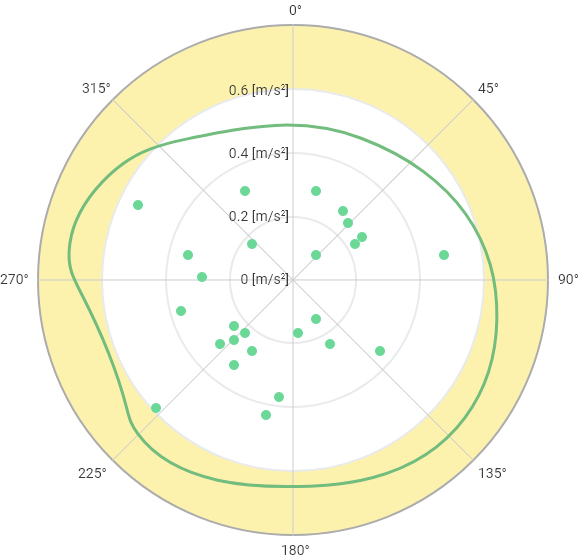
Polar plots are a type of graph that can be used to visualize data that has a periodic or cyclical component. They are particularly useful for visualizing data that is expressed in terms of angles or phases, such as wind direction or orientation.
For example, a polar plot could be used to visualize weather data such as wind direction and wind speed. The angle of the point on the polar plot would represent the wind direction, and the distance from the center of the plot would represent the wind speed. This allows the viewer to easily see the distribution of wind directions and speeds at a particular location over a period of time.
Similarly, a polar plot can be used to visualize accelerometer data, such as the orientation of a device in 3D space. The angle of the point on the polar plot would represent the orientation of the device, and the distance from the center of the plot could represent the magnitude of the acceleration. This allows the viewer to see how the orientation of the device changes over time.
Polar plots are can also be used for visualising displacement data from displacement sensors or gps sensors by showing the change from a set origo. Here the angle shows the direction of the movement, and the distance from the center shows the distance away from origo. In many situations the combined change from multiple axis is the more correct measure for alarms when alarms are set from known design limits in constructions.
Polar plots can be created using specialized software or by using a spreadsheet program such as Microsoft Excel. They are often used in scientific and engineering applications to visualize data that has a periodic or cyclical component.
For suspension bridges polar plots can be used to visualize the correlation between wind direction and acceleration in hangers. The angle is then used to visualize the wind direction and the distance from the center of the plot represents the maximum acceleration. If certain areas of the plot is more densly populated by points this could be an indicator that certain wind directions have a higher impact on the movement of the hanger.
« Back to list
